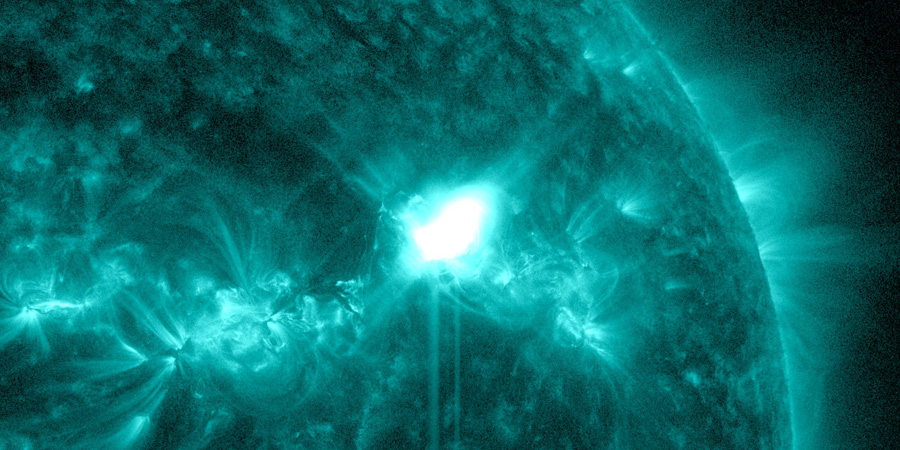M4.2 solar flare with earth-directed CME
Wednesday, 10 May 2023 13:45 UTC

We have had some stormy space weather these first few days of May! Perhaps not stormy in the sense of geomagnetic storms as we only had a maximum Kp value of 6 on the 6th of May and we hit Kp5 today, yesterday and on the 8th of May. But fair enough, not too bad perhaps reflecting on it but we want to focus on the Sun right now as that is where the real action is taking place. She has been popping of with many M-class solar flares, most of which we can thank sunspot region 3296 for.
To be precise, we counted 18 M-class solar flares since the beginning of this month. Some produced coronal mass ejections and some not. Today we are going to focus on a solar flare that took place yesterday which peaked at 18:58 UTC. It was an M4.2 solar flare from sunspot region 3296. This solar flare is not the strongest M-class solar flare that we have seen the past few days but it is interesting because it was highly eruptive. The long duration event was associated with Type II and IV radio sweeps and launched an asymmetrical full halo coronal mass ejection as seen in the animation below captured by SOHO/LASCO. While most of the ejecta is heading to the north-west, we think it is very likely that this plasma cloud will arrive at Earth late on May 11. Moderate G2 geomagnetic storm conditions will be possible after the plasma cloud arrives.
Yesterday's M4.2 flare from sunspot region 3296 launched an asymmetrical full halo coronal mass ejection as seen here by SOHO/LASCO.
— SpaceWeatherLive (@_SpaceWeather_) May 10, 2023
While most of the ejecta is heading to the north-west, we think it is very likely that this plasma cloud will arrive at Earth late on May 11. pic.twitter.com/Yo3FsPdUPG
Thank you for reading this article! Did you have any trouble with the technical terms used in this article? Our help section is the place to be where you can find in-depth articles, a FAQ and a list with common abbreviations. Still puzzled? Just post on our forum where we will help you the best we can!
Latest news
Latest forum messages
Support SpaceWeatherLive.com!
A lot of people come to SpaceWeatherLive to follow the Sun's activity or if there is aurora to be seen, but with more traffic comes higher server costs. Consider a donation if you enjoy SpaceWeatherLive so we can keep the website online!

Space weather facts
| Last X-flare | 2025/03/28 | X1.1 |
| Last M-flare | 2025/04/29 | M1.6 |
| Last geomagnetic storm | 2025/04/21 | Kp5+ (G1) |
| Spotless days | |
|---|---|
| Last spotless day | 2022/06/08 |
| Monthly mean Sunspot Number | |
|---|---|
| March 2025 | 134.2 -20.4 |
| April 2025 | 126.5 -7.7 |
| Last 30 days | 126.8 -0.8 |


